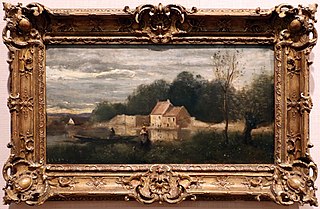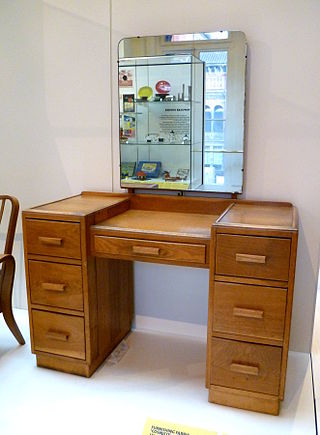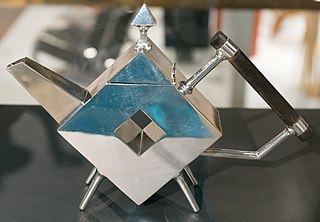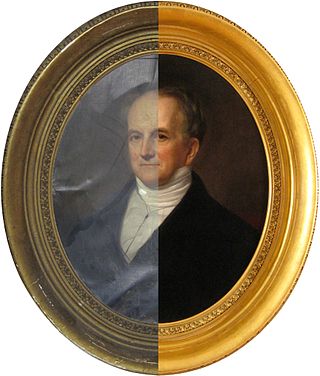This article has multiple issues. Please help improve it or discuss these issues on the talk page . (Learn how and when to remove these template messages)
|
The Rowley Gallery are picture frame makers and fine art dealers in London, England.
This article has multiple issues. Please help improve it or discuss these issues on the talk page . (Learn how and when to remove these template messages)
|
The Rowley Gallery are picture frame makers and fine art dealers in London, England.
Established in 1898 by Albert James Rowley and his wife Emma at 6 High Road, Silver Street, Kensington. (In 1909 Silver Street was renamed and whilst remaining in the same premises their new address became 140 Kensington Church Street.) Albert grew up in nearby Hammersmith, the son of James Rowley, an ecclesiastical carver and muralist. Emma grew up in Kensington and was the daughter of a local builder. The Rowley Gallery was founded in the same year that the couple married, as a small business specialising in picture framing, mounting, restoration, carving, gilding and exhibitions of paintings.
Albert had been a pupil at St Paul's School and his friendship with the artist Frank Brangwyn seems to date from this period through his association with Hammersmith's artistic community. Brangwyn worked for a while for William Morris who lived at Upper Mall in Hammersmith from 1878 until his death in 1896, and Albert was undoubtedly inspired by the legacy of the Arts and Crafts Movement established by Morris. Before very long The Rowley Gallery was also producing inlaid wood panels and furniture. Designs for panels were at first adapted from paintings by artists such as John Everett Millais, James McNeill Whistler and Lord Leighton, but then A J Rowley began to commission artists to make designs specifically for them. One of the first and most prolific of these artists was William Chase, who as well as creating many designs for inlay panels was also responsible for the distinctive Pan label used by The Rowley Gallery from 1912.
By this time The Rowley Gallery premises had expanded and its address was now 140-142 Church Street, Kensington. Along with Chase, other artists included Henry Butler, Horace Mann-Livens, Robert Anning Bell and most notably Sir Frank Brangwyn. In the 1920s Rowley lived in the village of Ditchling, East Sussex at Hillway House, which had been designed by Arthur Joseph Penty and built on land acquired from Brangwyn, who lived in the neighbouring house, known as The Jointure. The working relationship between Rowley and Brangwyn was long standing. The Studio Yearbook in 1916 noted an exhibition at The Rowley Gallery of "panels executed in stained wood from pictures by Mr Brangwyn, Mr Chase and others. These panels were the result of a series of experiments carried out by Mr A J Rowley, and it must be admitted that they possess real decorative value and promise interesting developments". Over the years Brangwyn contributed numerous designs for panels which proved to be increasingly popular. Hollyhocks is in the collection of the William Morris Gallery and The Galleon can be found at the Cecil Higgins Art Gallery. Rowley Gallery artefacts can also be found in the collections of the Victoria & Albert Museum and Brighton Museum & Art Gallery.
Rowley's son Laurence joined the firm in the mid-1920s bringing his enthusiasm for furniture design. Throughout the 1920s and 1930s The Rowley Gallery became renowned for its inlay wood panels, mirrors and screens as well as for its silver leaf furniture and interiors. They had workshops in Campden Street, Kensington Place and Addison Bridge Place. According to Dennis Gale, [1] workshop manager at Addison Bridge Place for several years during the 1930s, and husband of Rowley's daughter Betty, there were six cabinet makers, three French polishers, five workers in the paint shop and five seamstresses making curtains. Carpets were also designed and manufactured at these premises. There were two wood mills, and although some use of machinery was inevitable, dove-tailing was still done by hand. He remembered there to be a staff of around fifteen at Campden Street and about four or five porters at the main shop in Church Street.
Several well-known artists are recorded as having their work framed by The Rowley Gallery. Among those in the collection of the National Portrait Gallery are paintings by Harold Speed, Edward Wadsworth and Gluck (Hannah Gluckstein). By 1933 such was the success of the business that the premises at 140-142 Church Street were rebuilt in Portland stone, featuring a frieze designed by Brangwyn of three life-size carved wooden panels depicting sawyers, painters and carpenters. The interior decoration of the galleries featured walls "panelled in Japanese golden senwood with burnished silver fittings and black floors" (The Studio, 1933).
Sadly much of this was lost during the Second World War when in 1941 the new building was hit by an incendiary bomb. Vere Hodgson noted in her diary [2] – "Sunday 12th, woke late. Learned the big fire last night was in Church St. It was the Rowley Galleries – all burnt out. Great pots of paint and varnish on the top floor – went up like fun! Ran along to see it – the nicest shop in Church St. Remains of beautiful furniture and paintings all in the street." Somehow the Brangwyn panels survived and were later restored by Sam Alper and are displayed in the collection of Chilford Hall at Linton, Cambridgeshire. In the wake of this catastrophe The Rowley Gallery moved to their workshop premises at 86 & 87 Campden Street and from that time concentrated mainly on picture framing. A J Rowley died in 1944 and the business continued under the directorship of Laurence Rowley.
In 1967 Laurence's son, Christopher Rowley, was responsible for opening new showrooms at the present address, 115 Kensington Church Street, which had direct access to the workshops at 86 & 87 Campden Street. The Kensington News & West London Times noted The Rowley Gallery's return to Church Street - "The interior decoration of these new commodious and well-lit showrooms is befitting a company of artistic skill and taste. A silver gilt panelled ceiling and fabric covered walls blends well amidst the traditional design of a waxed pine shopfront. The entire effect is a pleasant reminder of earlier days before the advent of plastics and stainless steel." But sadly this relaunch proved unsuccessful and by 1969 the company was ready to close down.
The Rowley Gallery was rescued by Jonathan Savill and Jack Rutherford, two long standing customers, who bought the ailing company. Savill was responsible for running the business and his enthusiasm sustained The Rowley Gallery for over 25 years until his retirement in 1995. He sold the business to three employees, Chris Hamer, Kai Yin Lam and Cathy Williams who carried on trading as framemakers, gilders and restorers. Williams retired in 2003 and Hamer and Lam continue as The Rowley Gallery's present directors, nowadays not only framemaking, gilding and restoring, but also exhibiting contemporary paintings and prints.

Thomas Chippendale (1718–1779) was a cabinet-maker in London, designing furniture in the mid-Georgian, English Rococo, and Neoclassical styles. In 1754 he published a book of his designs in a trade catalogue titled The Gentleman and Cabinet Maker's Director—the most important collection of furniture designs published in England to that point which created a mass market for furniture—upon which success he became renowned. According to the Victoria and Albert Museum, "so influential were his designs, in Britain and throughout Europe and America, that 'Chippendale' became a shorthand description for any furniture similar to his Director designs".

Grinling Gibbons was an Anglo-Dutch sculptor and wood carver known for his work in England, including Windsor Castle, the Royal Hospital Chelsea and Hampton Court Palace, St Paul's Cathedral and other London churches, Petworth House and other country houses, Trinity College, Oxford, and Trinity College, Cambridge. Gibbons was born to English parents in Holland, where he was educated.

Giovanni Battista Cipriani was an Italian painter and engraver, who lived in England from 1755. He is also called Giuseppe Cipriani by some authors. Much of his work consisted of designs for prints, many of which were engraved by his friend Francesco Bartolozzi.

Émile-Jacques Ruhlmann, , was a French furniture designer and interior decorator, who was one of the most important figures in the Art Deco movement. His furniture featured sleek designs, expensive and exotic materials and extremely fine craftsmanship, and became a symbol of the luxury and modernity of Art Deco. It also produced a reaction from other designers and architects, such as Le Corbusier, who called for simpler, functional furniture.

Sir Frank William Brangwyn was a Welsh artist, painter, watercolourist, printmaker, illustrator, and designer.

Verre églomisé is a French term referring to the process of applying both a design and gilding onto the rear face of glass to produce a mirror finish. The name is derived from the 18th-century French decorator and art-dealer Jean-Baptiste Glomy (1711–1786), who was responsible for its revival.

Pietra dura or pietre dure, called parchin kari or parchinkari in the Indian Subcontinent, is a term for the inlay technique of using cut and fitted, highly polished colored stones to create images. It is considered a decorative art. The stonework, after the work is assembled loosely, is glued stone-by-stone to a substrate after having previously been "sliced and cut in different shape sections; and then assembled together so precisely that the contact between each section was practically invisible". Stability was achieved by grooving the undersides of the stones so that they interlocked, rather like a jigsaw puzzle, with everything held tautly in place by an encircling 'frame'. Many different colored stones, particularly marbles, were used, along with semiprecious, and even precious stones. It first appeared in Rome in the 16th century, reaching its full maturity in Florence. Pietra dura items are generally crafted on green, white or black marble base stones. Typically, the resulting panel is completely flat, but some examples where the image is in low relief were made, taking the work more into the area of hardstone carving.

A picture frame is a protective and decorative edging for a picture, such as a painting or photograph. It makes displaying the work safer and easier and both sets the picture apart from its surroundings and aesthetically integrates it with them.

Morris, Marshall, Faulkner & Co. (1861–1875) was a furnishings and decorative arts manufacturer and retailer founded by the artist and designer William Morris with friends from the Pre-Raphaelites. With its successor Morris & Co. (1875–1940) the firm's medieval-inspired aesthetic and respect for hand-craftsmanship and traditional textile arts had a profound influence on the decoration of churches and houses into the early 20th century.
West Kensington, formerly North End, is an area in the ancient parish of Fulham, in the London Borough of Hammersmith and Fulham, England, 3.4 miles (5.5 km) west of Charing Cross. It covers most of the London postal area of W14, including the area around Barons Court tube station, and is defined as the area between Lillie Road and Hammersmith Road to the west, Fulham Palace Road to the south, Hammersmith to the north and West Brompton and Earl's Court to the east. The area is bisected by the major London artery the A4, locally known as the Talgarth Road. Its main local thoroughfare is the North End Road.

Sir Sydney Gordon Russell, was an English designer, craftsman and educationist.

The Anglo-Japanese style developed in the United Kingdom through the Victorian period and early Edwardian period from approximately 1851 to the 1910s, when a new appreciation for Japanese design and culture influenced how designers and craftspeople made British art, especially the decorative arts and architecture of England, covering a vast array of art objects including ceramics, furniture and interior design. Important centres for design included London and Glasgow.

Brighton Museum & Art Gallery is a municipally-owned public museum and art gallery in the city of Brighton and Hove in the South East of England. It is part of Brighton & Hove Museums. It costs £9 for a yearly pass, discounted to £6.75 for Brighton and Hove residents and students at local universities.
Peter Waals, born Pieter van der Waals, was a Dutch cabinet maker associated with the Arts and Crafts movement.
Mallett is furniture and works of art agent and dealer based in London and New York. For most of the second half of the 20th century and the first decade of the 21st century, it occupied a position at the forefront of the English furniture trade, profiting from the growth in interest in the style of British and European 18th and 19th century furniture and works of art.
Italian Baroque interior design refers to high-style furnishing and interior decorating carried out in Italy during the Baroque period, which lasted from the early 17th to the mid-18th century. In provincial areas, Baroque forms such as the clothes-press or armadio continued to be used into the 19th century.

Pastiglia, an Italian term meaning "pastework", is low relief decoration, normally modelled in gesso or white lead, applied to build up a surface that may then be gilded or painted, or left plain. The technique was used in a variety of ways in Italy during the Renaissance. The term is mostly found in English applied to gilded work on picture frames or small pieces of furniture such as wooden caskets and cassoni, and also on areas of panel paintings, but there is some divergence as to the meaning of the term between these specialisms.

The conservation and restoration of painting frames is the process through which picture frames are preserved. Frame conservation and restoration includes general cleaning of the frame, as well as in depth processes such as replacing damaged ornamentation, gilding, and toning.
Steven Thomas is an English designer and visual artist best known for his interiors and graphic design work for the Biba fashion brand.

William Morris (1834-1898), a founder of the British Arts and Crafts movement, sought to restore the prestige and methods of hand-made crafts, including textiles, in opposition to the 19th century tendency toward factory-produced textiles. With this goal in mind, he created his own workshop and designed dozens of patterns for hand-produced woven and printed cloth, upholstery, and other textiles.